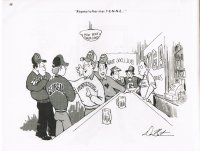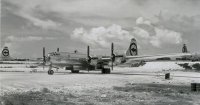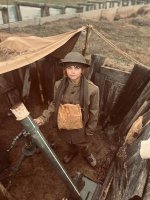OneManGang
Senior Member
- Joined
- Sep 7, 2004
- Messages
- 2,003
- Likes
- 9,492
Tennessee vs The Maxims vs Georgia
DATE: 5 November 2022
PLACE: Sanford Stadium, Athens, Georgia
ATTENDANCE: 92,746
FINAL SCORE: Tennessee 13 Georgia 27
Pregame: Raising the educational standards in Georgia …

Postgame:

(They quit taking mine after the Dooley years)
If Saturday's game proved anything, it confirmed what I had been thinking all week: that while Josh Heupel's bag of tricks is very large it is not bottomless. Georgia did to Tennessee what Tennessee had done to Kentucky. They handed the Vols a bus ticket home and a note to try harder next time.
Georgia took the opening kickoff but fumbled when LaTrell Bumphus hit the Georgia runner and Tennessee recovered. The Vols' subsequent drive stalled after two false-start penalties and McGrath hit a 47-yard field goal. It is This Writer's opinion that had Tennessee scored a touchdown here it would have set a completely different tone for the game. It can be argued that, the Alabama game aside, in Josh Heupel's offense a field goal is something of a booby-prize.
Georgia took the subsequent kickoff and marched 80 yards for a touchdown.
All was not yet lost for the Vols but their next possession was again stymied by a procedure penalty. The Vol defense then held the Dawgs to a three-and-out when Georgia's punt went out on the Tennessee one. Tennessee's receiver had failed to ensure the kick went into the end zone. Hooker was subsequently sacked and fumbled on third down but the ruling was that Tennessee got the ball out of the end zone. It would seem that Tennessee should have argued for the safety as at least they could have kicked from the 25 instead of Brooks standing at the back of the end zone. Tennessee needed a 50+ yard punt. Brooks' kick went 36.
Stetson Bennett then tossed a 37-yard touchdown pass and one could just FEEL the wind go out of Tennessee's sails.
The quarter ended with the Dawgs on the Vol 7.
End of 1st Quarter
Score: Tennessee 3 UGA 14
Bennett tossed a five-yard td pass on Georgia's second play of the quarter,
Tennessee took the ensuing kickoff and drove down the field to the UGA 9 where they had it 3rd and two. TWO consecutive False Start penalties changed that to 3rd-and-12. An incomplete to Fant and McGrath came on to kick his second field goal of the day.
It was that kind of day for the Vols.
After a Dawg punt, the Vols made it to the UGA 39 where a Hooker pass was intercepted in the end zone. The Dawgs then drove to the Tennessee two where the Vol defense held them to a field goal.
End of 2nd Quarter
Score: Tennessee 6 UGA 24
After a first half that Vol fans will remember, in not a good way at all, Tennessee got the ball to start the 2nd half. The Vols made it to the Georgia 46 when Hooker was sacked twice and that was that.
The Dawgs took the punt and made it to the UT 20, stalled and settled for as field goal.
After an exchange of turnovers the quarter ended.
End of 3rd Quarter
Score: Tennessee 6 UGA 27
Tennessee FINALLY scored a touchdown on a 5-yard run by Jaylen Wright with 4:15 on the clock but it was way too little and way too late.
It was that kind of day for the Vols.
Final Score
Score: Tennessee 13 UGA 27
********
It is an axiom that for everything there is a first time. So it is in war. On August 17, 1942 a B-17E Flying Fortress bearing the evocative nickname Yankee Doodle crossed the French coast leading a formation of eleven other Fortresses. It was Mission 1 of the U. S. 8th Air Force. In time the 8th Air Force would grow from this miniscule force heading toward the rail yards at Rouen into an awesome collection of aerial might. A few Luftwaffe fighters rose to greet the interlopers but were chased off by escorting Royal Air Force Spitfires. There was also some desultory anti-aircraft fire from German guns around the city but all the bombers dropped their loads on the rail road yards and made it back to England.
The pilot of the lead B-17 for the Rouen strike force was a 27 year old Lt. Colonel named Paul W. Tibbets. Later in 1942, Tibbets would go on to complete a full 25 mission tour of duty and come to be regarded as not only an excellent pilot but a gifted commander. Now, for those of us looking back some sixty-plus years later, twenty-five missions may not seem like much. However, the life expectancy of a bomber and its crew in 1942-43 was less than fifteen missions.
Upon his return stateside in 1943, Tibbets was assigned to the B-29 project which was in serious trouble. The B-29 project was General H. Henry “Hap” Arnold’s personal focus and rivaled the Manhattan project in size and scope if not secrecy. The B-29 bomber was pushing aeronautical technology to its limits. It used new engines, a new wing, new cabin-pressurization technology and a remote fire-control system for its defensive gun turrets. The B-29 Superfortress built on the lessons from its predecessors the classic Boeing B-17 Flying Fortress and the equally classic Consolidated B-24 Liberator. It would be faster, fly higher and carry a larger bomb load farther than any bomber to date. As with any aircraft that pushes existing technology so far, the Superfortress had a laundry list of serious problems and defects that had to be overcome before it could be deployed.
In September of 1944, Tibbets was called to Washington for reassignment. After an extensive security check (so extensive that his father called to ask if Tibbets was in some kind of trouble) he was ushered in to the office of Gen. Uzal C. Ent. It was Ent who first told Tibbets of the Top Secret project to develop the atomic bomb and that he, Tibbets had been tapped to recruit, train and lead the 509th Composite Group. All members of the 509th would go through the same exhaustive background checks and be sworn to absolute secrecy before being allowed to join. Then they would train and develop tactics for this new chapter in military history.
“My job, in brief was to wage atomic war.” Tibbets recalled in his memoirs, “It didn’t matter that I wasn’t a scientist and had very little knowledge of the strange world of neutron, proton, electrons and gamma rays. … The question that worried General Ent and the others, and which now became my problem, was how to drop a bomb of such magnitude without risking damage to or destruction of the airplane that made the delivery.”
Tibbets’ command would be the 509th Composite Group. He went the Boeing plant in Wichita to personally select the planes for his group, he also hand-picked the crews to fly them. General Groves gave him a word to use if he absolutely needed something. The code word SILVERPLATE was the sign for absolute priority, nobody or nothing could interfere with a “Silverplate” priority. It says much for Tibbets that he never once abused this authority.
The B-29 itself was meanwhile making a less-than-auspicious combat debut. Grouped into the 20th Air Force, the initial combat units were deployed to China to fulfill a rash promise from FDR to Chiang Kai-Shek that China would a base for the American Bomber offensive against Japan. There were immense problems making that happen. There were no land links from advance bases in India to the airbases in China. Every bullet, bomb and gallon of gas for the B-29s had to be flown in. This reached the point where, at certain times, it took two gallons of fuel to deliver one gallon for the bombers.
Also the Chinese bases were under constant threat from the Japanese Army which still occupied much of China. Fortunately a solution was at hand.
In the summer of 1944, American forces seized the Marianas Islands. The most important of these were Saipan, Guam and Tinian. All three islands were captured specifically to provide bases for B-29s. North Field on Tinian would be the main hub. The 20th Air Force opened for business on October 12th with the arrival of Gen. Hayward Hansell on board his personal SuperFort, Joltin’ Josie. Within weeks the first strikes were flown against Empire (the Japanese main islands) targets.
Once again, the results were not what they should have been. Bombing accuracy was atrocious and losses were high. B-29s operating at their assigned altitudes above 30,000 ft encountered the jet stream. The jet stream is a 300 mph river of air of which little was known in 1944. The practical problem was that a plane flying against the stream could make little headway, while on the return trip, the tail wind could push the big planes to over 400 mph. “Hap” Arnold was most unhappy and Hansell was soon replaced by Curtis LeMay who had led the 8th Bomber Command to victory in Europe.
LeMay flew a couple of conventional mission with similar results then stood down and reconsidered. He noted that while Japanese main-assembly plants were as large as any, the subcontractors used “cottage industry” for parts and sub-assemblies. Nearly every Japanese household was engaged in some form of war production, from sewing uniforms to metal work. Most Japanese buildings were of wood and paper construction and fire was a constant hazard. John Hershey’s book Hiroshima meant to paint a sympathetic picture of the Japanese civilians, bears all this out. LeMay ordered the defensive gun turrets removed from his planes. On March 8, 1945 he briefed his crews telling them that they would fly at low-level and drop incendiaries on the flammable Japanese cities, and they would be flying at night. The first target city: Tokyo.
Pathfinder bombers flew in first and laid out a giant blazing “X” in the middle of downtown Tokyo, then 282 following aircraft dropped 2000 tons of M-69 napalm sticks into the growing inferno. The storm Japan had unleashed at Pearl Harbor became a firestorm that killed Tokyo.
Hell had come to breakfast.
The fires fed the winds and whole blocks of houses simply disappeared. People running to reach bridges found them gone, and crowds piled up at the approaches. Others jumped into rivers and canals to escape, but some of the smaller canals were boiling. The people looked up at the B-29s with a mixture of awe, hatred, horror … and despair.
(Birdsall)
No accurate count was ever possible but somewhere between 125,000 and 175,000 died that night. Sixteen square miles of Tokyo had simply ceased to exist. On an inspection tour after the war LeMay noted grimly that amongst the ashes, in the ruins of nearly every other house, was a drill press or other machine tool.
Other cities would follow. After a visit by 20th Bomber Command one night, 99.6% of the city of Toyama was a black patch of earth. The missions went on. Massive strikes mustering 800 or more bombers against multiple targets flew out of Tinian. The war ground on.
Meanwhile the 509th had arrived at Tinian. Tibbets’ crews practiced for atomic missions by dropping a 10,000lb practice bomb called a “Pumpkin.” All the other flyers at Tinian knew was that there was this strange group called the 509th. They lived apart, never flew Empire missions and when they did fly only three or four planes went out at a time. They also quickly discovered that if you asked too many questions, you’d find yourself guarding a bush in the Shemya National Forest in the Aleutians.
One anonymous wag decided he had it all figured out and penned a bit of verse to Explain The Whole Thing:
Into the air the secret rose,
Where they’re going nobody knows;
But we’ll never know where they’ve been.
Don’t ask about results or such,
Unless you want to get in Dutch,
But take it from one who’s sure of the score,
The 509th is winning the war.
That anonymous wit had no idea …
On 6 August 1945, the world found out just what the 509th Composite Bomb Group had been up to.
********
So, how did the Vols do against The Maxims?
1. The team that makes the fewest mistakes will win.
EIGHT dead ball pre-snap penalties violate this Maxim in its most fundamental sense. Then there were the blown coverages, an opponent who strengths exactly matched UT's weaknesses that we've commented on before, and total failures in the kicking game and you have a recipe for defeat. The fact the Vols were able to keep the game as close as they did says a lot.
2. Play for and make the breaks. When one comes your way … SCORE!
Georgia is one of those teams that you absolutely cannot allow to get their swagger going. When the Vols did essentially nothing after the Dawgs' first touchdown, the handwriting was on the wall.
3. If at first the game – or the breaks – go against you, don't let up … PUT ON MORE STEAM!
Tennessee's defense held Georgia to three second half points. That provided an opportunity. However, by that time, the Vol offense had lost the thread and were mentally unable to get out of an “omigod” mind-set. See Maxim #4.
4. Protect our kickers, our quarterback, our lead and our ballgame.
Hooker was rushed, hit, chased and thrown off his game the whole day. Letting Georgia march downfield to a touchdown after McGrath's first quarter field goal and then suffering that 75-yard punt that went out on the Vol one sealed the deal. Saturday's game proved Napoleon's Maxim that. “In war, the moral is to the physical as ten is to one.” To use a more modern analogy, UGA got inside the Tennessee offense's OODA* loop and stayed there.
5. Ball! Oskie! Cover, block, cut and slice, pursue and gang tackle … THIS IS THE WINNING EDGE.
OK, the Vols held UGA to less than 400 yards total offense. In modern football that is quite the achievement. Also, Tennessee's run defense lived up to its reputation and no Georgia back gained more than 52 yards. Unfortunately, It was not the amount of yards the Dawgs gained, it was the timing and the results that mattered.
6. Press the kicking game. Here is where the breaks are made.
The special teams duel was pretty much even for most of the game. However, Tennessee's failure on Georgia's first punt was decisive.
7. Carry the fight to Georgia and keep it there for sixty minutes,
Georgia was definitely the aggressor Saturday. That said, the defense eventually found its feet but by then the offense had been rendered bemused, bothered, bewildered and befuddled.
Everybody in Orange PMS151 needs to take a deep breath. This was one game. Sensible people knew going in that in order to win at Sanford Stadium on Saturday, the Vols would need to play virtually error-free football. They didn't and paid the price. BUT Tennessee still has an excellent opportunity to win out and still exceed everybody's expectations prior to the Ball State game. Given where UT was toward the end of the Beldar occupation, the Vols are WAY ahead of schedule. There is still much to enjoy and to look forward to.
*The OODA loop is a four-step process that governs all decision-making in a dynamic environment: Observe; Orient; Decide; Act.
Suggested Reading:
Steve Birdsall, Saga of the Superfortress
Bob Green, Duty: A Father, His Son, and the Man Who Won the War
Edward Jabloski, AirWar
BG Paul W. Tibbets, Jr., Return of the Enola Gay
Enola Gay of the 509th Composite Group at Tinian (NARA)





